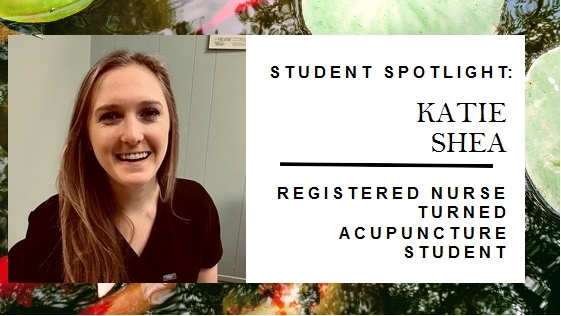By John Scott, DOM
In this article on treating patients with sinus allergies with Chinese Medicine I would like to focus on treating root causes. Quite often when treating sinus allergies the immediate focus is on symptoms which are really considered a branch treatment. In Chinese medicine we don’t treat the allergen; we treat the weak or the system that is out of balance. Since in Chinese medicine there are no isolated systems we see different systems involved in this particular pattern of disharmony.
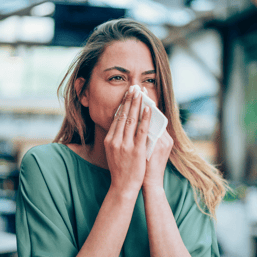
Allergies represent an attempt by the body to enclose harmful foreign substances. Stress is an important factor with allergies. When an individual is under increased stress they are more likely to be more reactive in general.
Once this foreign substance elicits an allergic response, such as itching, swelling or sneezing, it is there after deemed an allergen. An allergen can be anything that triggers an allergic reaction. Foods pollen mold chemical family member, a spouse. Of course certain substances can be more likely than others to be reactive. Juniper, cedar, chamisa and certain damp foods like wheat and dairy have large hard to assimilate proteins which can cause more irritation that other substances. Desert and dry weather pollens tend to be more irritating because they have adapted to be stickier and resistant in order to survive without water.
Usually, the systems that I see that are the most often out of balance are usually relating to the liver/kidney systems. There are two primary patterns that I see with environmental allergies; stress is a factor in both of these presentations.
Wind Cold Presentation
This type of allergic presentation is characterized by clear copious nasal drainage. There may also be sneezing, sniffling, post nasal drip, fatigue, feeling chilled, weak low back, and low back pain. There may be psychologic issues around safety. This will be caused by adrenal exhaustion, and kidney yang or qi deficiency.
In these cases the tongue will be pale, maybe swollen, while the pulse will be weak and or deep especially in the deep, third position on the right wrist.
Herbal treatment: Xanthium & Magnolia Formula to al
To address the allergic symptoms. Nourish Essence Formula is a good formula to work on the causes of the allergies; It has a number of astringent herbs that help to dry up excessive fluids as well as supporting the kidneys and the adrenal glands. The Essential Yang Formula is an excellent formula for supporting the kidney yang. Other Chinese formulas that support kidney qi and yang are: Ba Wei Di Huang Wan and You Gui Wan.
Ear Acupuncture Points: Suprarenal gland, kidney, endocrine, lung, inner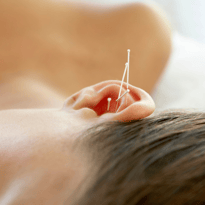 nose
nose
Acupuncture points: Fuliu (Kid 7), Zusanli (St 36), Hegu (Li 4), Lieque (Lu7), additional point possibilities: Shangjuxu (St. 37), Shanglian (Li 9), Shousanli (Li10), Shenshu (Ub 23), Fengmen (Ub 12), Feishu (Ub 13), Gaohuangshu (Ub 43)
Moxabustion: Mingmen (Du 4), Shenshu (Ub 23), Qihai (Ren 6), Guanyuan (Ren 4)
Wind Heat Presentation
This type of presentation is characterized by inflammation and heat symptoms. This is usually described as wind heat or heat excess. There patient will have sinus congestion and or inflammation, headaches, burning eyes. The most common root cause of this is an imbalance in the liver and or gall bladder meridians, as well as heat in the lung meridian. Treating the liver and gall bladder channels will provide a treatment that will be more effective that just addressing the symptoms. This will greatly assist the body in coping and clearing the inflammatory response to the environmental irritants like pollen.
The tongue will be red and there may be scalloped edges, there may also be a yellow coat. In addition the pulse will be tight and maybe rapid or wiry.
Herbal Treatment: The formula of choice for symptom relief is Jade Screen & Xanthium Formula. Xanthium Nasal Formula is appropriate when the heat and inflammatory symptoms are more severe. This formula can be used during the season that the patient has allergic problems or just when symptoms arise or nearly constantly. I find it is effective to use a formula to address the constitutional imbalances that the patient is presenting. Usually the formulas that I recommend are Free and Easy Wanderer Plus or Bupluerum and Tang Kuei Formula. Free and Easy Wanderer Plus is also a very good formula for chemical sensitivities.
Ear Acupuncture Points: Liver, kidney, endocrine, lung, inner nose
Acupuncture points: Zhaohai (Kid 6), Zusanli (St 36), Hegu (Li 4), Lieque (Lu7), Taichong (Liv 3), Xingjian (Liv 2), Extra points Yintang, Pitung, Zanzhu (Ub 2) Chai Pai, additional point possibilities: , Fengmen (Ub 12), Feishu (Ub 13), Gaohuangshu (Ub 43), Ganshu (Ub 18), Danshu (Ub 19)
Zhaohai (Kid 6) and Lieque (Lu 7) used if combination for sinus congestion, inflammation, headaches and burning eyes. Use Zhaohai first followed by Lieque leave in for about an hour then remove and replace in opposite order for five minutes. Use of gold needle for this treatment increases the effectiveness.
There can of course be other pattern presentations a patient may possess besides these 2 basic patterns. Please consider other constitutional factors and possibilities. Just keep in mind that you will get fantastic results and relief with patients with sinus allergies when you support the constitution and treat the root in addition to the branch symptoms.

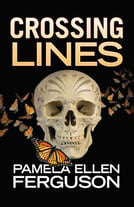
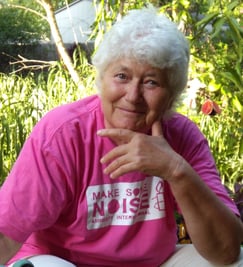 enthusiastic students. I left AOMA about a decade ago as Dean of Asian Bodywork Therapy, but continued to teach one of the Ethics classes until 2019, and CE workshops. I'm so proud to have been a part of the teaching foundation of AOMA, with Drs.
enthusiastic students. I left AOMA about a decade ago as Dean of Asian Bodywork Therapy, but continued to teach one of the Ethics classes until 2019, and CE workshops. I'm so proud to have been a part of the teaching foundation of AOMA, with Drs. 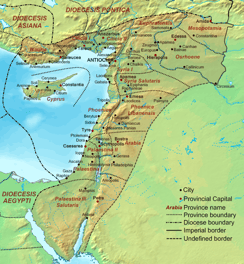
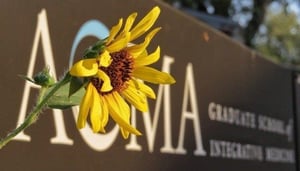 AOMA along with the world of Acupuncture as a whole has moved away from the usage of the word. The medicine taught and practiced at AOMA comes not from the falsely depicted “backwards nations” of colonial fiction, but from the rich, vibrant cultures of Asia which were just as diverse and advanced (more so at times) as those of Europe. By shedding this burdened word from our lexicon we seek not to abandon the roots of Acupuncture, but rather to continue integrating this medicine into American society.
AOMA along with the world of Acupuncture as a whole has moved away from the usage of the word. The medicine taught and practiced at AOMA comes not from the falsely depicted “backwards nations” of colonial fiction, but from the rich, vibrant cultures of Asia which were just as diverse and advanced (more so at times) as those of Europe. By shedding this burdened word from our lexicon we seek not to abandon the roots of Acupuncture, but rather to continue integrating this medicine into American society. ose. I moved back to Austin and began work at a wonderful organization, The Marbridge Foundation, which is a residential care facility for adults with intellectual disabilities. I worked there full-time before starting AOMA master’s program. I stayed on as a part-time employee all throughout my time at AOMA, and left Marbridge all together about a year ago. It was a wonderful place to work and my experiences there instilled in me patience, communication skills, and stress management skills for myself as well as for patients.
ose. I moved back to Austin and began work at a wonderful organization, The Marbridge Foundation, which is a residential care facility for adults with intellectual disabilities. I worked there full-time before starting AOMA master’s program. I stayed on as a part-time employee all throughout my time at AOMA, and left Marbridge all together about a year ago. It was a wonderful place to work and my experiences there instilled in me patience, communication skills, and stress management skills for myself as well as for patients..jpg?width=1973&name=Acupuncture%20(5).jpg)
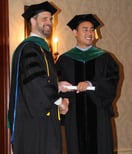 of schooling required. People are often shocked to learn that a Master Degree is required before they may sit for the National Boards exams. What’s more, this is not your standard two year Master’s. AOMA’s program is 203.5 quarter credits (equal to 135.6 semester credits), typically takes four and a half years, and involves a total of 2970 instructional hours. Of those, 161.5 of the credits, or 1962 hours are Didactic and 42 credits, 1008 hours, are clinical.
of schooling required. People are often shocked to learn that a Master Degree is required before they may sit for the National Boards exams. What’s more, this is not your standard two year Master’s. AOMA’s program is 203.5 quarter credits (equal to 135.6 semester credits), typically takes four and a half years, and involves a total of 2970 instructional hours. Of those, 161.5 of the credits, or 1962 hours are Didactic and 42 credits, 1008 hours, are clinical..jpg?width=136&name=Classroom_Blood%20Pressure%20(1).jpg) working alongside other healthcare providers with the best interest of the patient in mind. To this end AOMA’s program covers a wide range of biomedical topics including Medical Biochemistry, Pathophysiology, and Biomedical Pharmacology among others.
working alongside other healthcare providers with the best interest of the patient in mind. To this end AOMA’s program covers a wide range of biomedical topics including Medical Biochemistry, Pathophysiology, and Biomedical Pharmacology among others.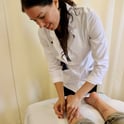 acupuncture programs require a lot of clinical and hands on laboratory hours. As mentioned earlier, 1008 of AOMA’s 2970 instructional hours are clinical, this translates to 34%, one third of the program. This process begins with Clinic Theater I in which students are exposed to the diagnostic methods of TCM including the techniques and application of acupuncture and Chinese herbal medicine by observing professional treatments performed by a member of the AOMA faculty. This culminates in a full clinical internship, in which the student, as a supervised intern, performs the intake, diagnosis, and treatment of patients.
acupuncture programs require a lot of clinical and hands on laboratory hours. As mentioned earlier, 1008 of AOMA’s 2970 instructional hours are clinical, this translates to 34%, one third of the program. This process begins with Clinic Theater I in which students are exposed to the diagnostic methods of TCM including the techniques and application of acupuncture and Chinese herbal medicine by observing professional treatments performed by a member of the AOMA faculty. This culminates in a full clinical internship, in which the student, as a supervised intern, performs the intake, diagnosis, and treatment of patients.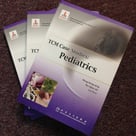 academic backgrounds, and published research. At AOMA there are 37 faculty members, including 29 Licensed Acupuncturists, 7 Medical Doctors, 2 Ph.D.’s and 6 faculty members who hold both an MD and a Ph.D. AOMA Graduate School is also the home of the only Chinese herbal pharmacologist Ph.D. in the United States. About two thirds of our faculty bring to the table at least a decade of tenure and many years of training and practicing TCM in China.
academic backgrounds, and published research. At AOMA there are 37 faculty members, including 29 Licensed Acupuncturists, 7 Medical Doctors, 2 Ph.D.’s and 6 faculty members who hold both an MD and a Ph.D. AOMA Graduate School is also the home of the only Chinese herbal pharmacologist Ph.D. in the United States. About two thirds of our faculty bring to the table at least a decade of tenure and many years of training and practicing TCM in China.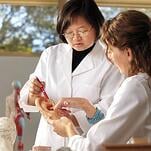
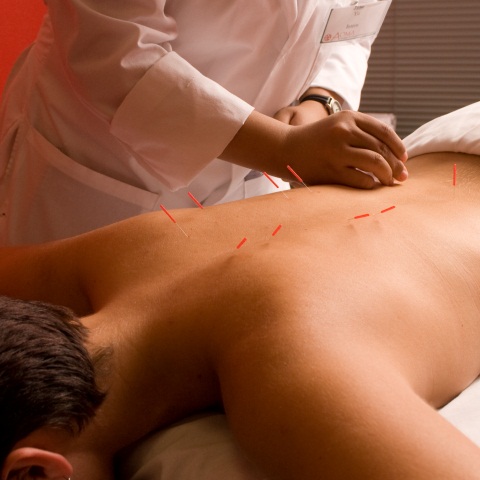 Professional opportunities
Professional opportunities.jpg?width=225&height=150&name=students_studying_(2).jpg)
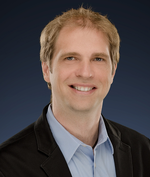 is an accomplished researcher and skilled health care practitioner with a rich academic and professional background. His interest in lifestyle and environmental determinants of health led him to earn a Doctor of Naturopathic Medicine and a Master of Science in Acupuncture & Oriental Medicine from Bastyr University, as well as a Master of Public Health in Epidemiology from the University of Washington. As a practitioner of Naturopathic and Chinese medicines, Dr. Finnell’s clinical focus is on nutrition, pharmacognosy, herb-drug interactions, mind-body medicine, disease prevention, and lifestyle education. In addition to maintaining a professional Naturopathic and Chinese medicine practice, Dr. Finnell has also completed a post-doctoral fellowship with the National Center for Complementary and Alternative Medicine (NCCAM), and served as the acting Director of Research for the TrueNorth Health Foundation. Dr. Finnell’s strong research background and clinical experience as a Naturopathic and Chinese medicine practitioner enable him to bring an evidence-based and integrative perspective to AOMA’s doctoral program.
is an accomplished researcher and skilled health care practitioner with a rich academic and professional background. His interest in lifestyle and environmental determinants of health led him to earn a Doctor of Naturopathic Medicine and a Master of Science in Acupuncture & Oriental Medicine from Bastyr University, as well as a Master of Public Health in Epidemiology from the University of Washington. As a practitioner of Naturopathic and Chinese medicines, Dr. Finnell’s clinical focus is on nutrition, pharmacognosy, herb-drug interactions, mind-body medicine, disease prevention, and lifestyle education. In addition to maintaining a professional Naturopathic and Chinese medicine practice, Dr. Finnell has also completed a post-doctoral fellowship with the National Center for Complementary and Alternative Medicine (NCCAM), and served as the acting Director of Research for the TrueNorth Health Foundation. Dr. Finnell’s strong research background and clinical experience as a Naturopathic and Chinese medicine practitioner enable him to bring an evidence-based and integrative perspective to AOMA’s doctoral program.

